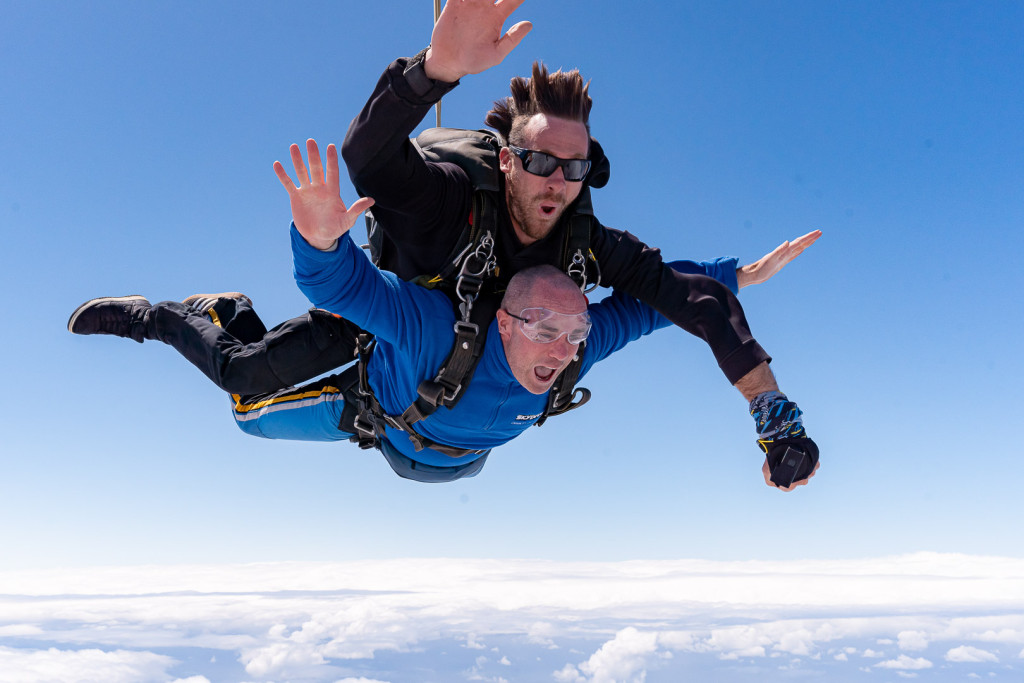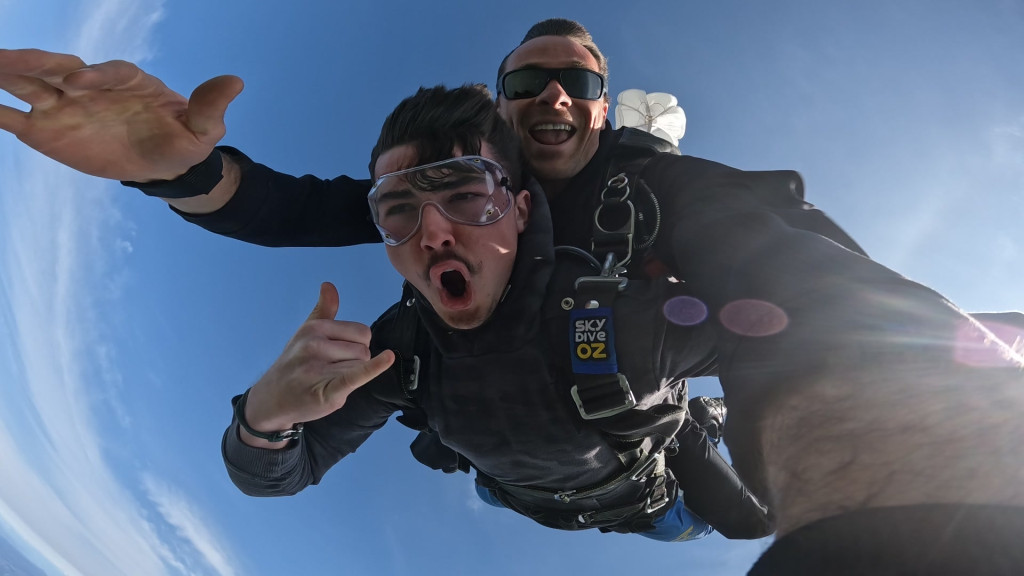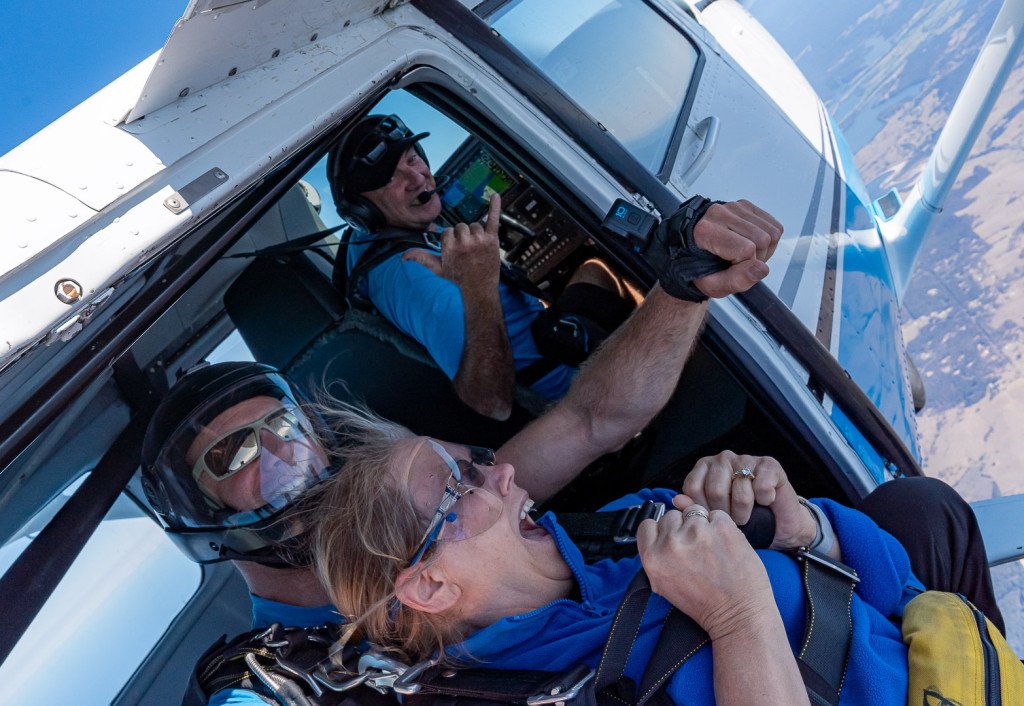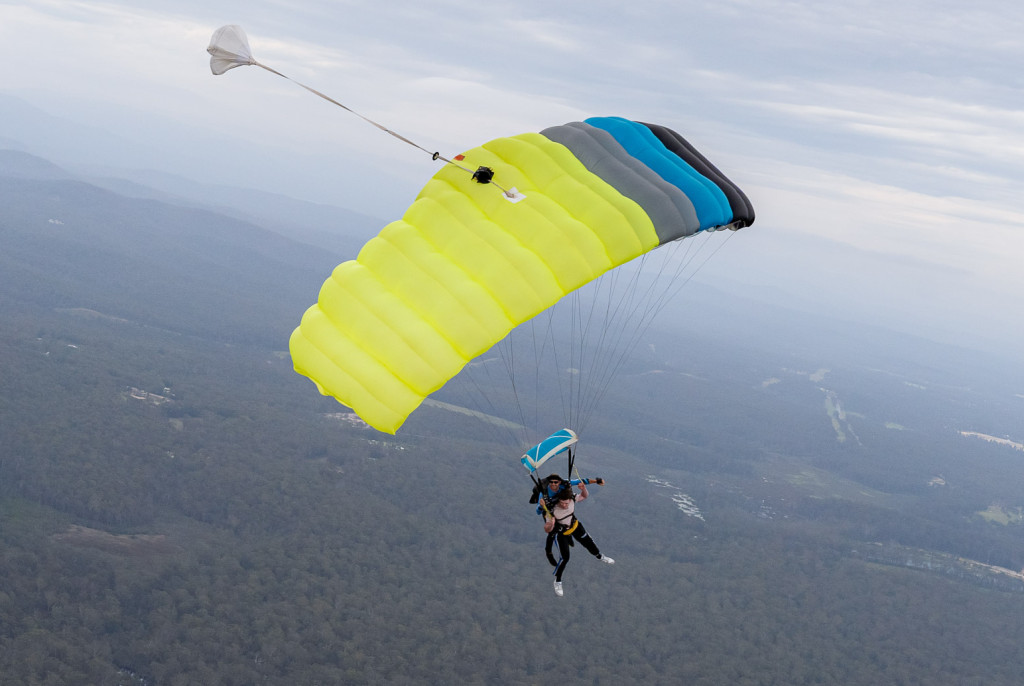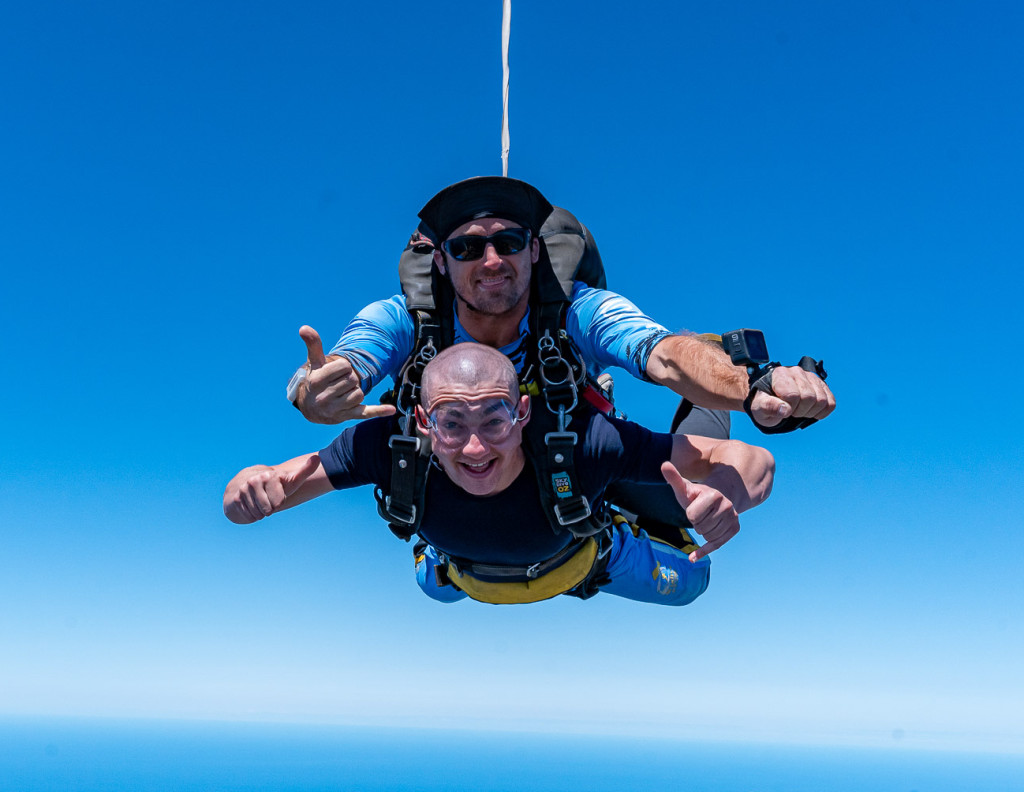1. What is tandem skydiving?
Tandem skydiving is a popular form of skydiving where a student skydiver is connected to a certified tandem instructor. The instructor controls the entire skydive, allowing the student to enjoy the experience without having to worry about the technical aspects.
2. How does tandem skydiving work?
During a tandem skydive, you will be securely attached to a tandem instructor with a harness. You will jump together from the plane, experience the thrill of freefall (usually around 60 seconds), and then the instructor will deploy the parachute for a leisurely canopy ride back to the ground.
3. Is tandem skydiving safe?
While we take extensive measures to mitigate risks and ensure a safe experience, it’s important to acknowledge that skydiving, like any adventure sport, involves inherent risks. Our team follows strict safety protocols set by the Australian Parachute Federation, and prioritise training and expertise. However, as with any outdoor activity, we cannot guarantee absolute safety.
4. Can anyone go tandem skydiving?
Tandem skydiving is generally available to anyone who is at least 16 years old. However, there may be certain weight and health restrictions in place for safety reasons. It’s important to check with the skydiving center beforehand to ensure you meet the requirements.
5. How much does tandem skydiving cost?
The cost of tandem skydiving can vary depending on the location and any additional packages or services you choose, such as photo or video packages.
6. Can I buy tandem skydiving as a gift?
Absolutely! Tandem skydiving gift vouchers are available for purchase. It makes for a thrilling and unforgettable gift for friends or loved ones. You can contact our skydiving center to inquire about gift vouchers and the available options.
7. How do I book a tandem skydive?
Booking a tandem skydive is easy. You can either book online through our website or contact our skydiving center directly. We recommend booking in advance to secure your preferred date and time, especially during peak seasons.
